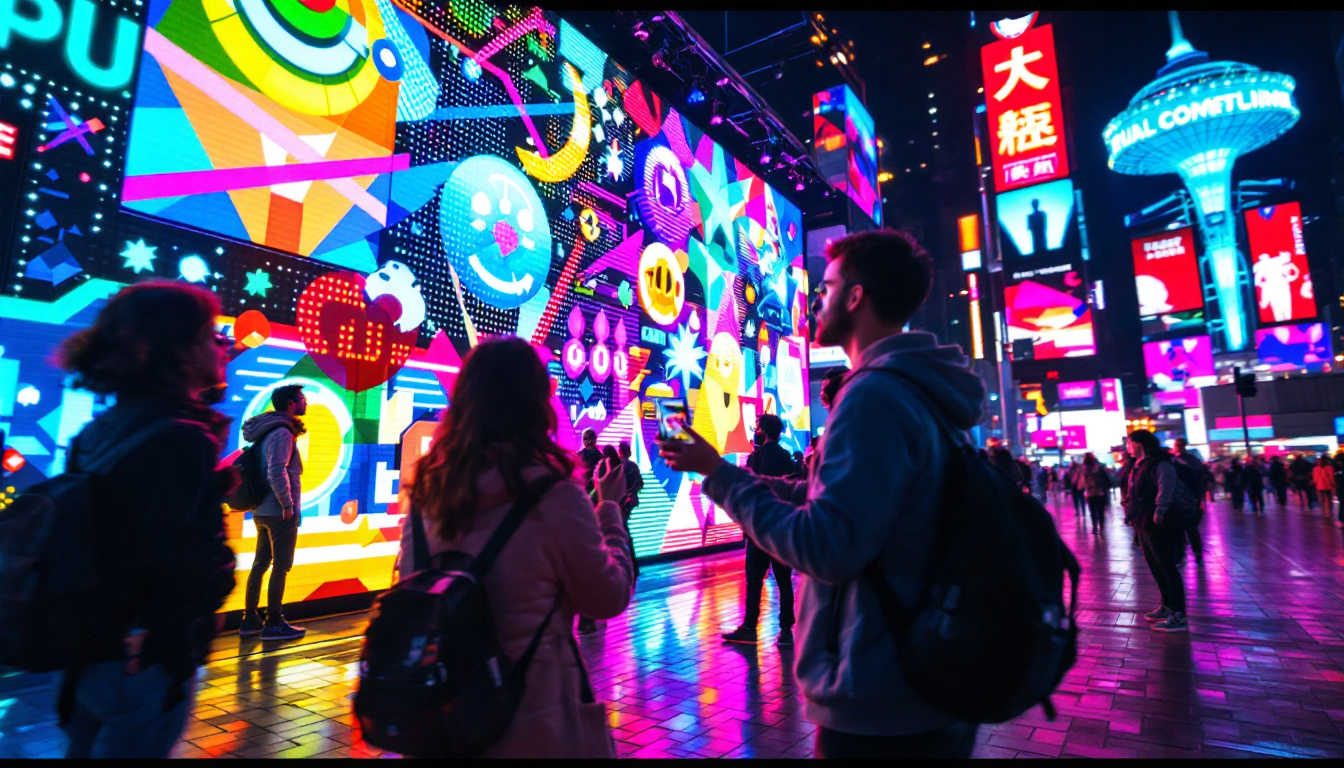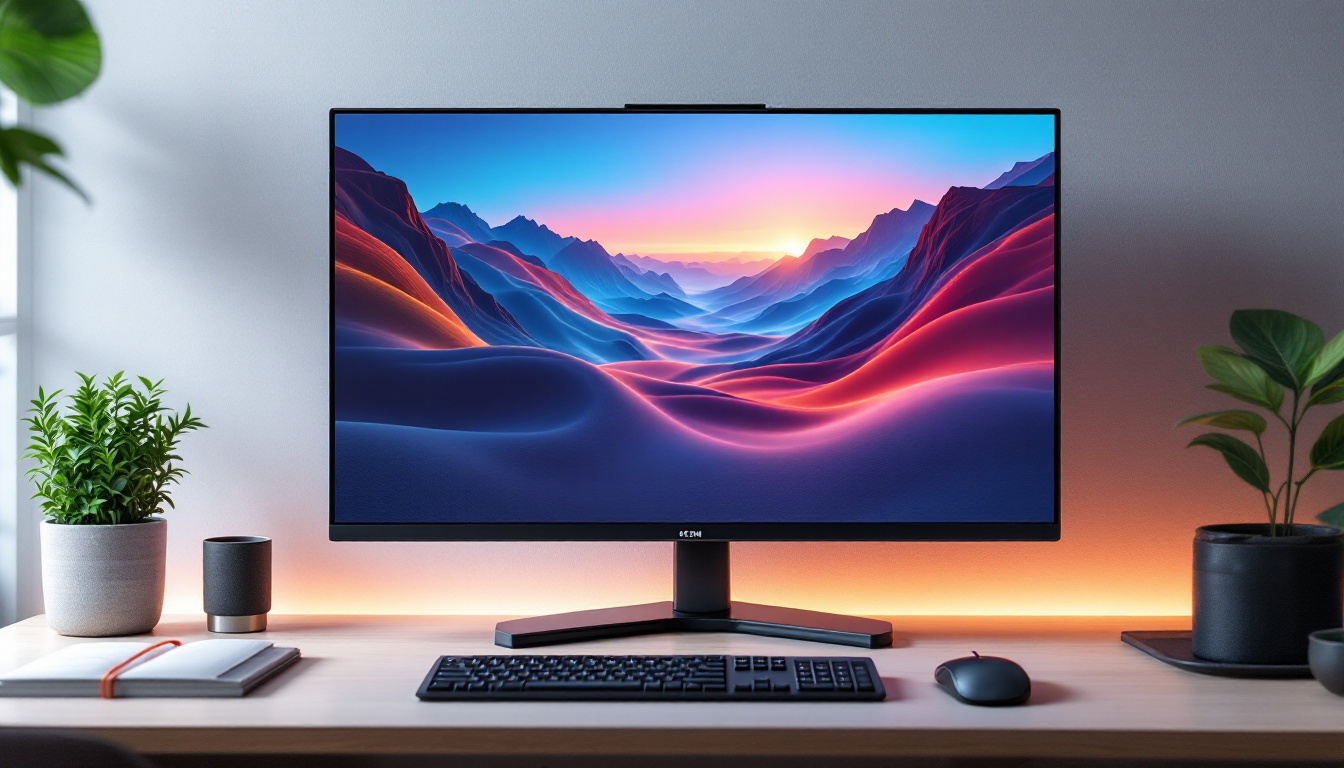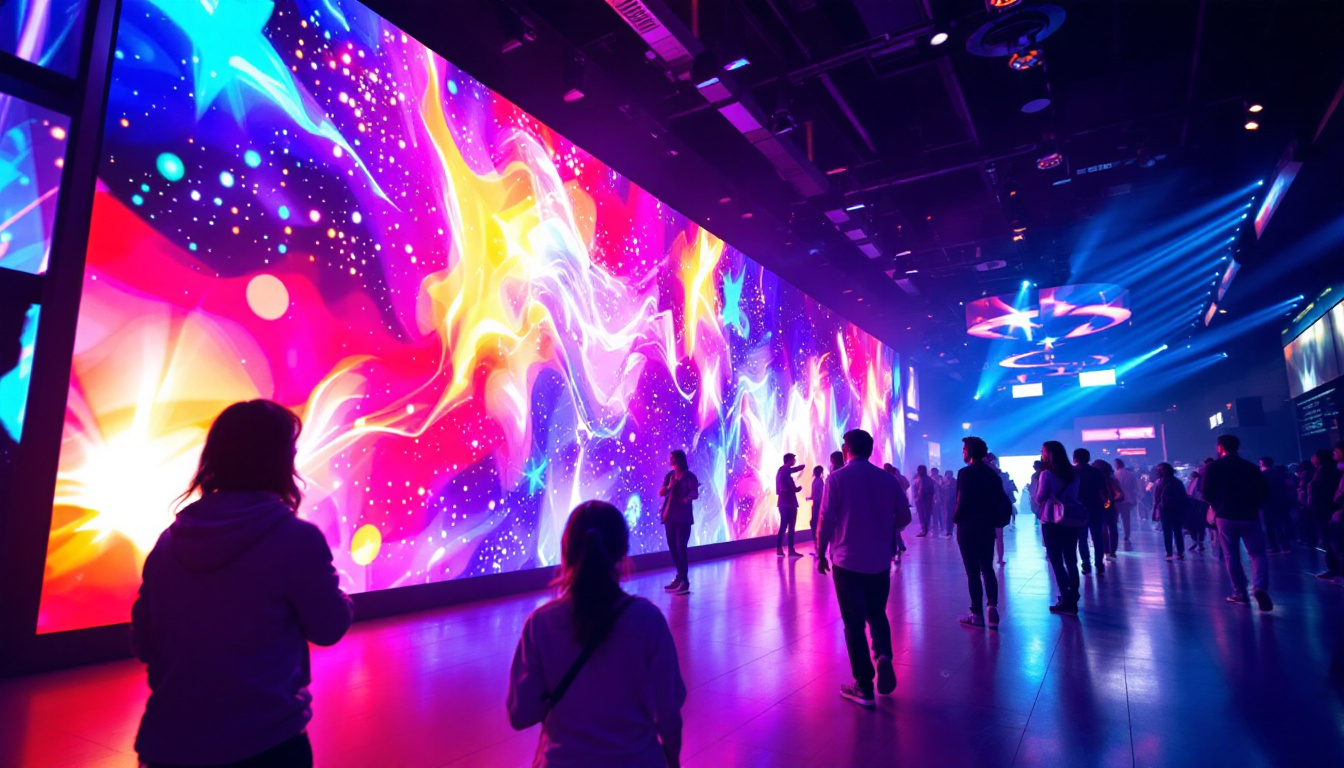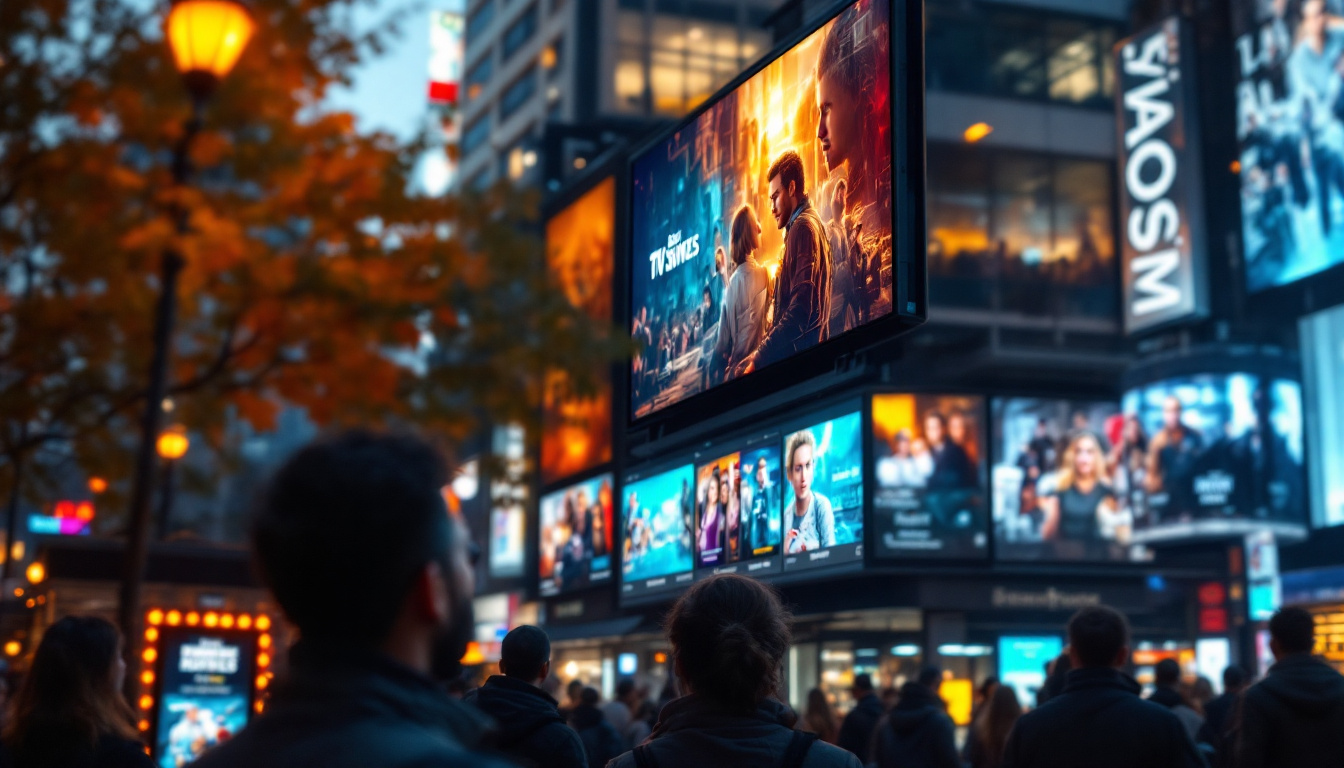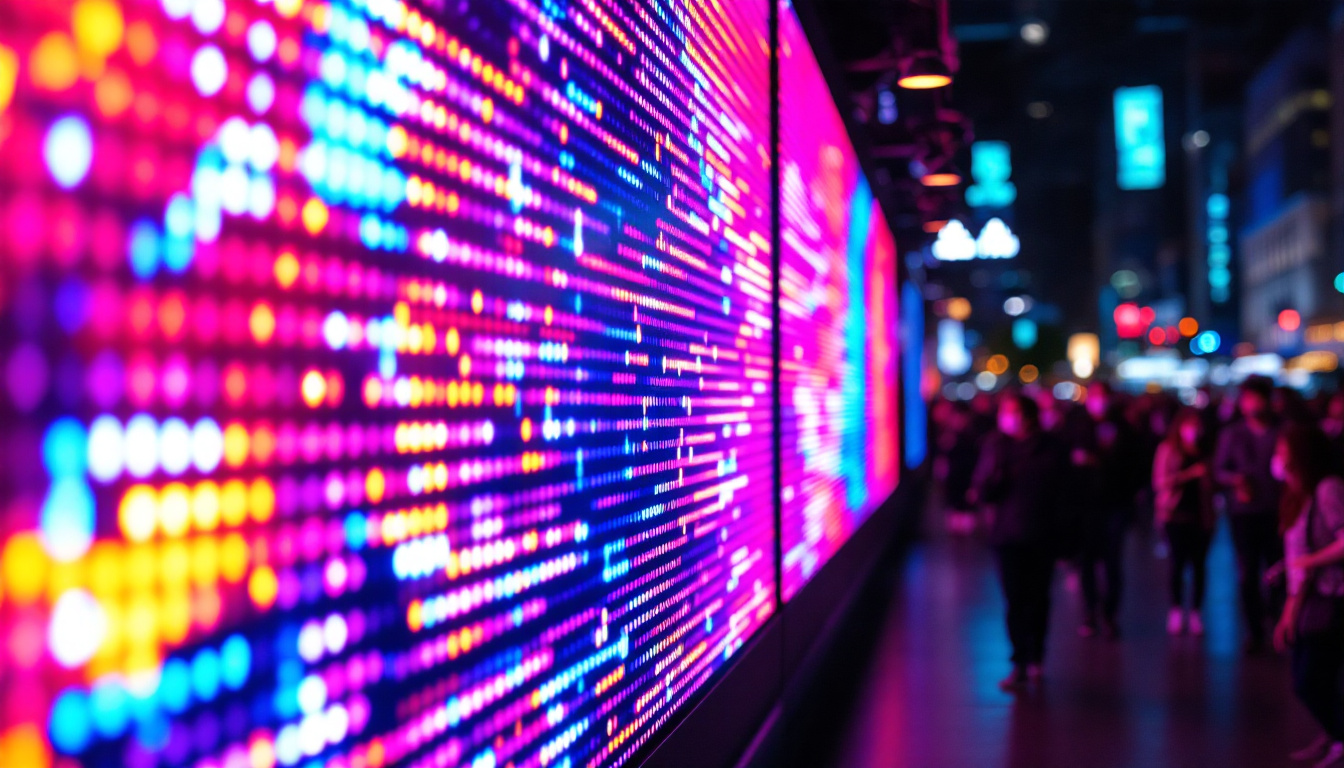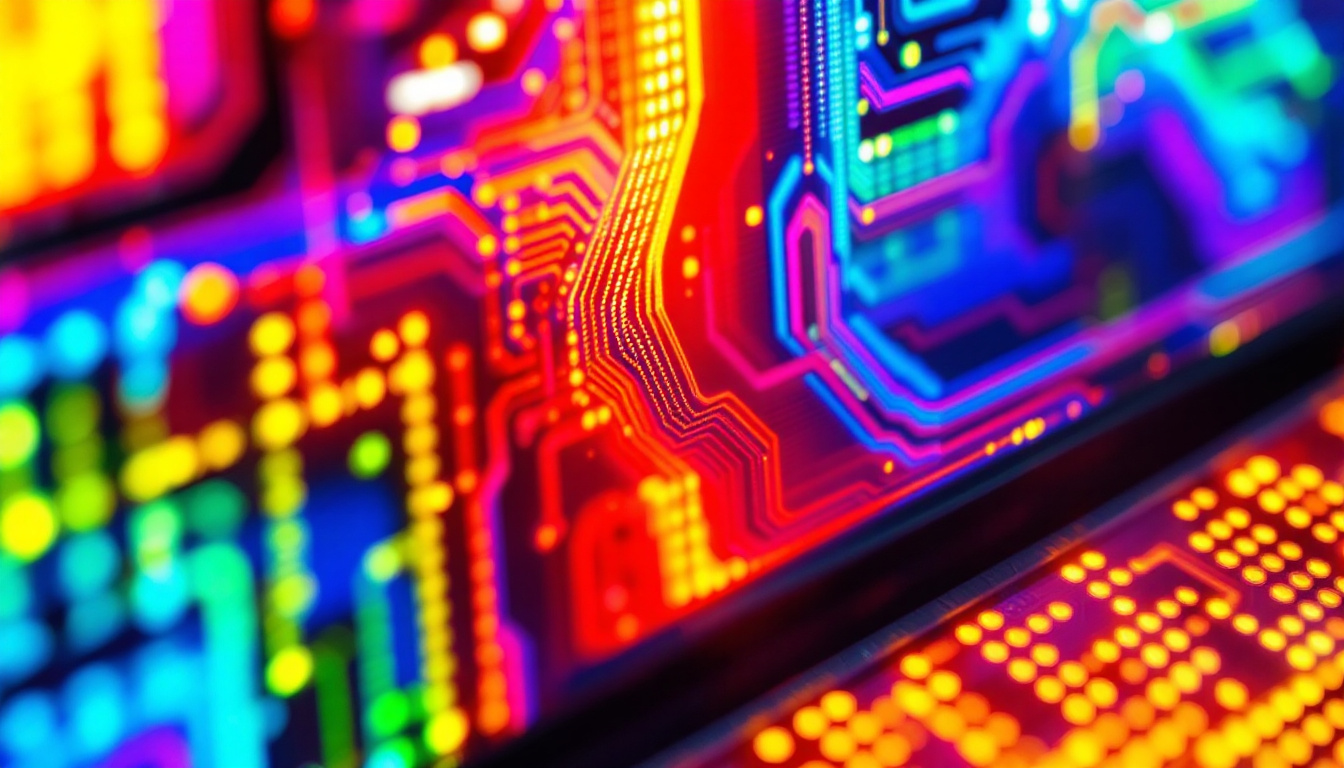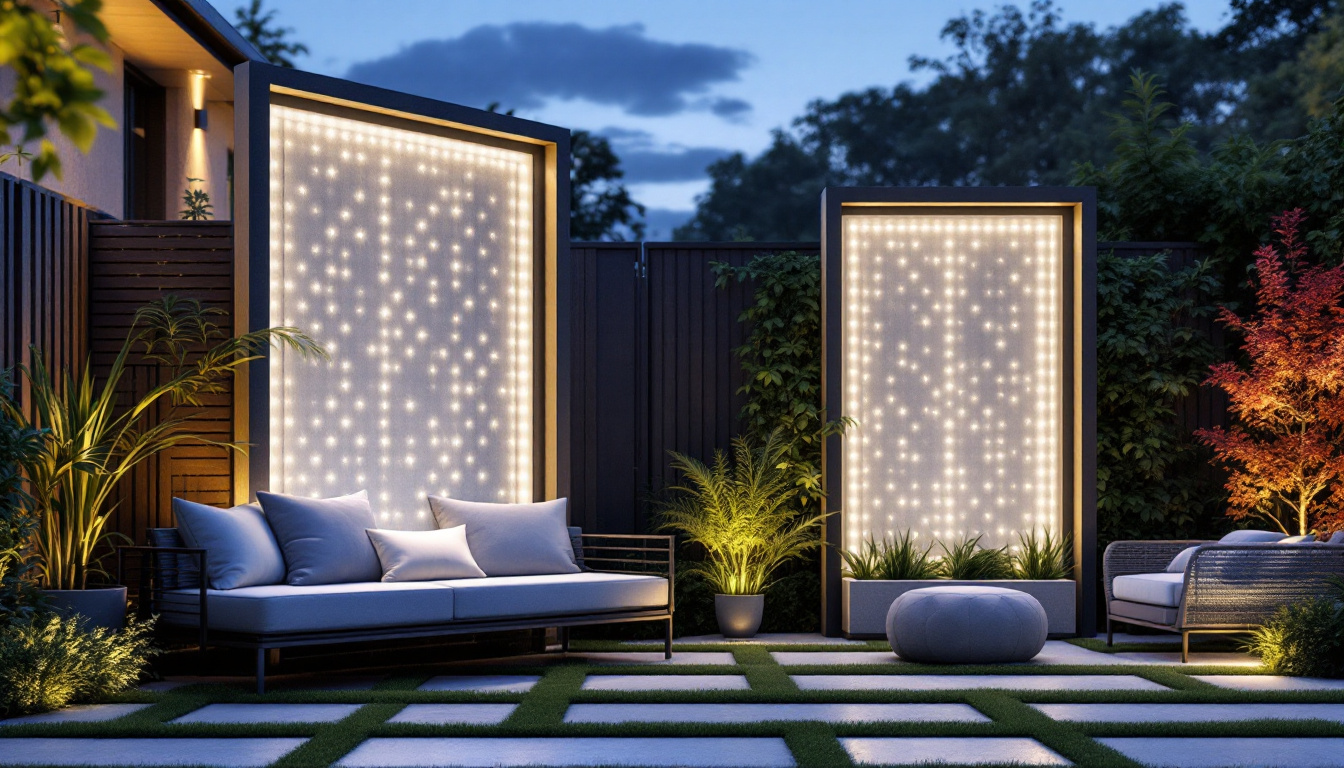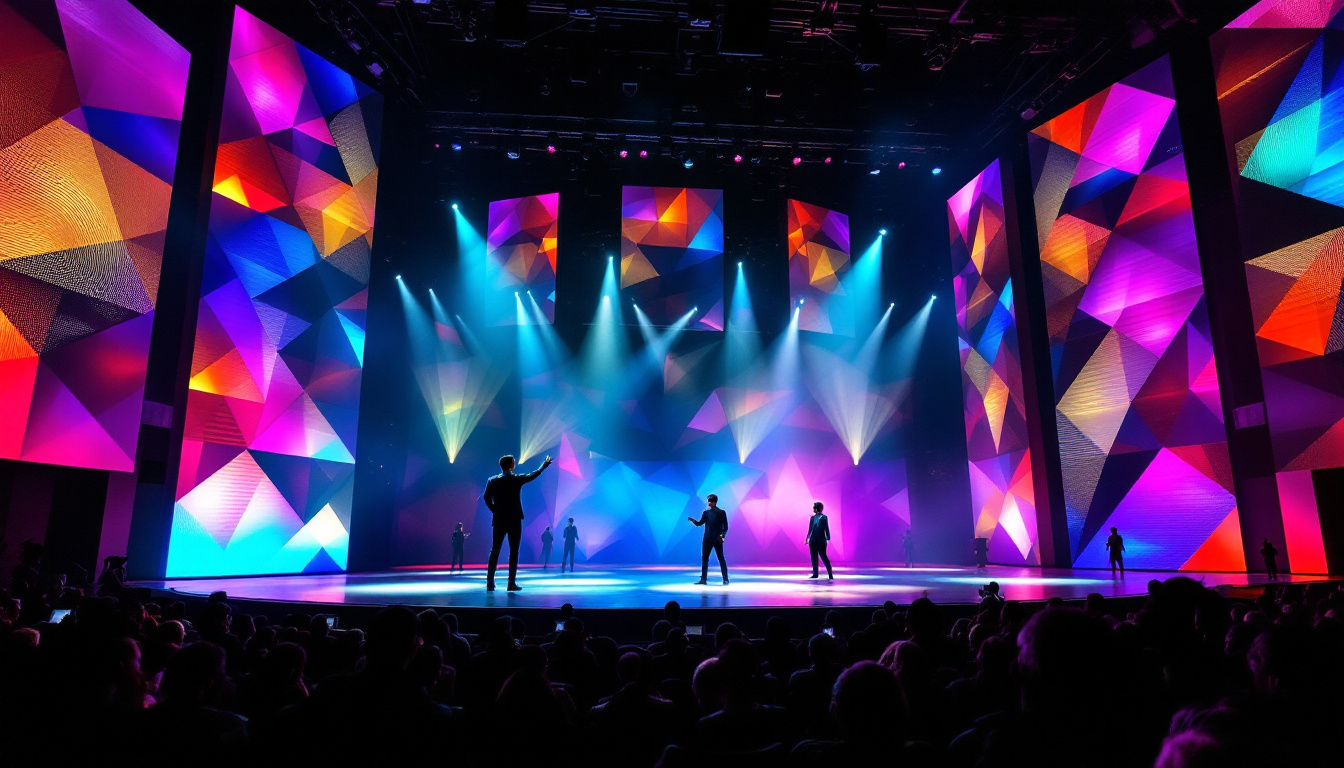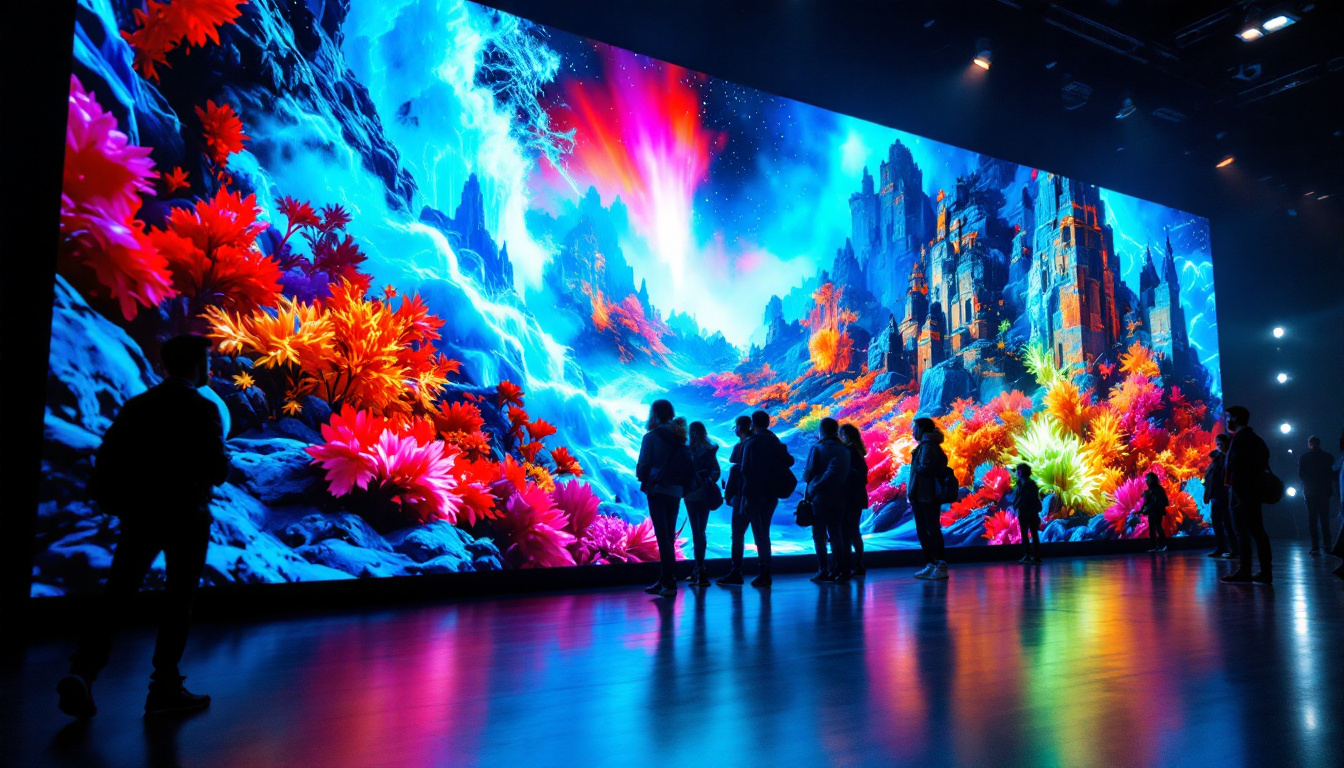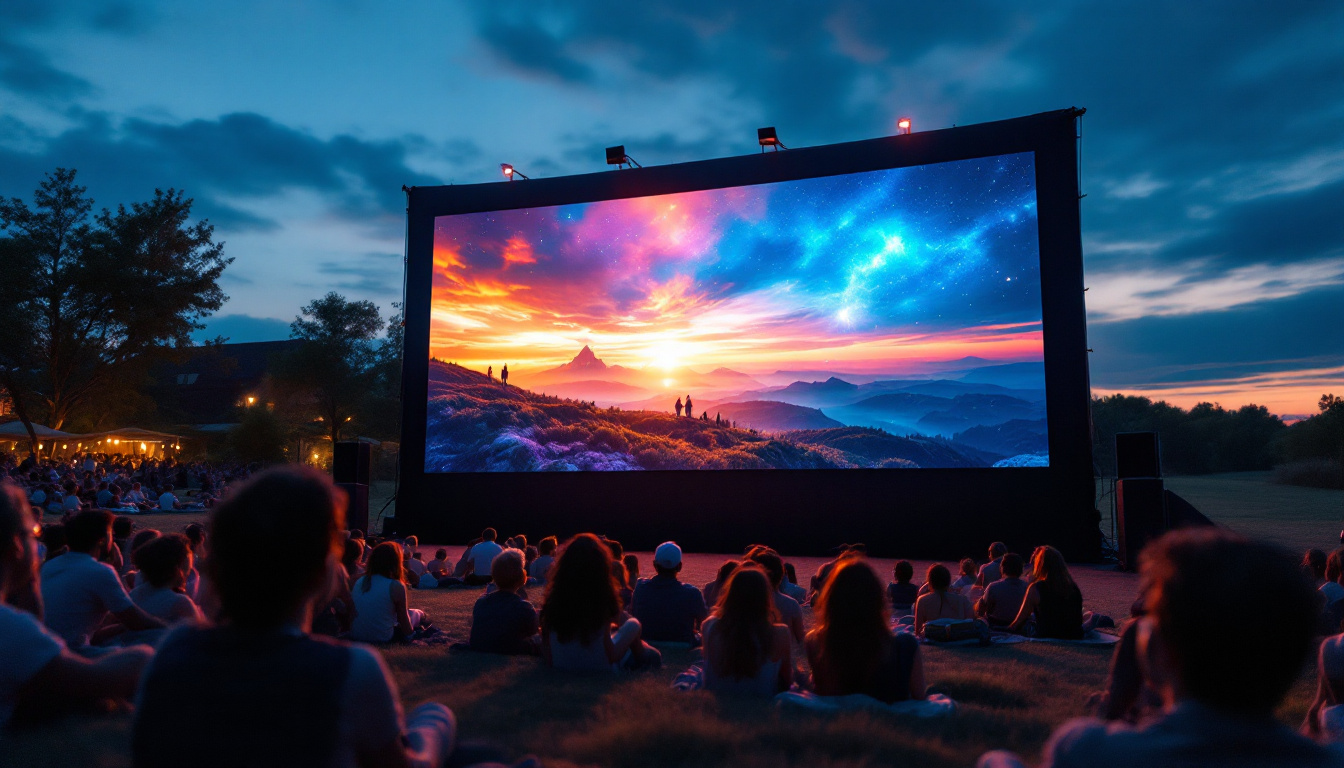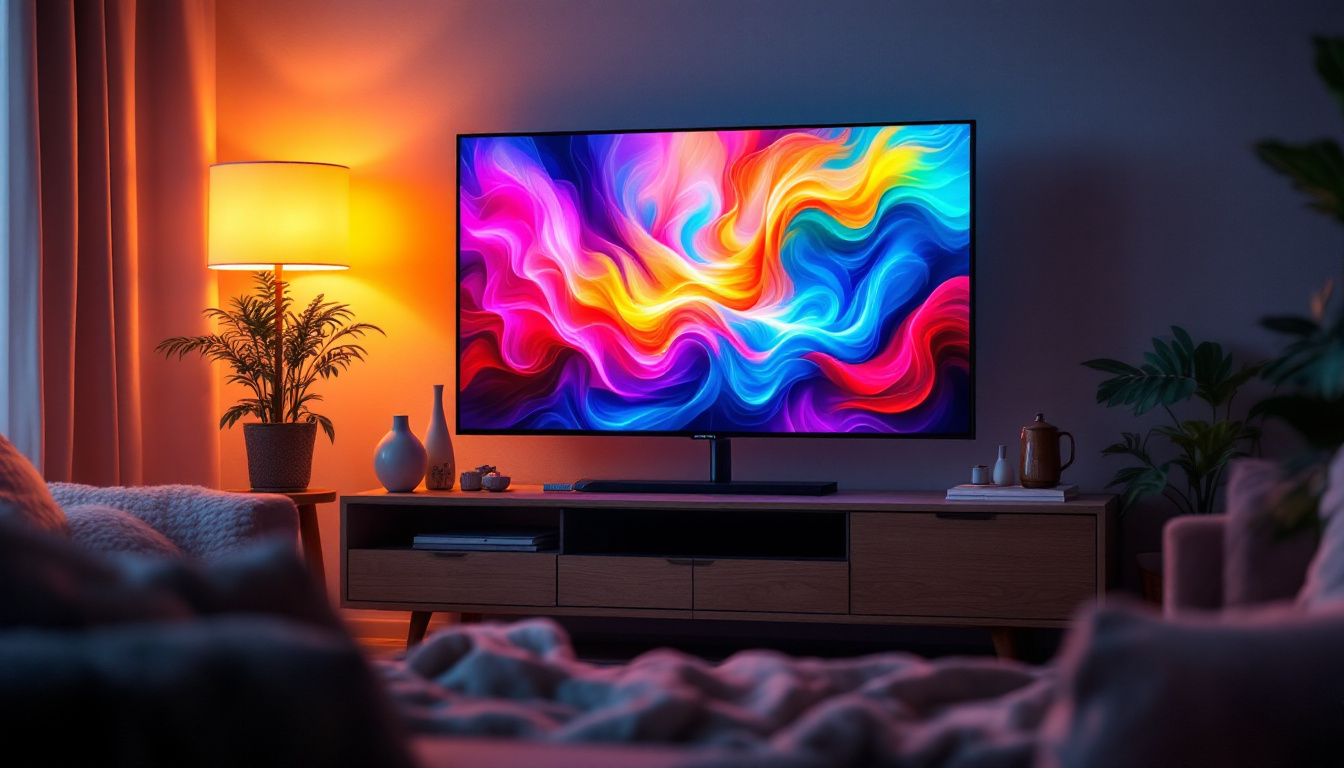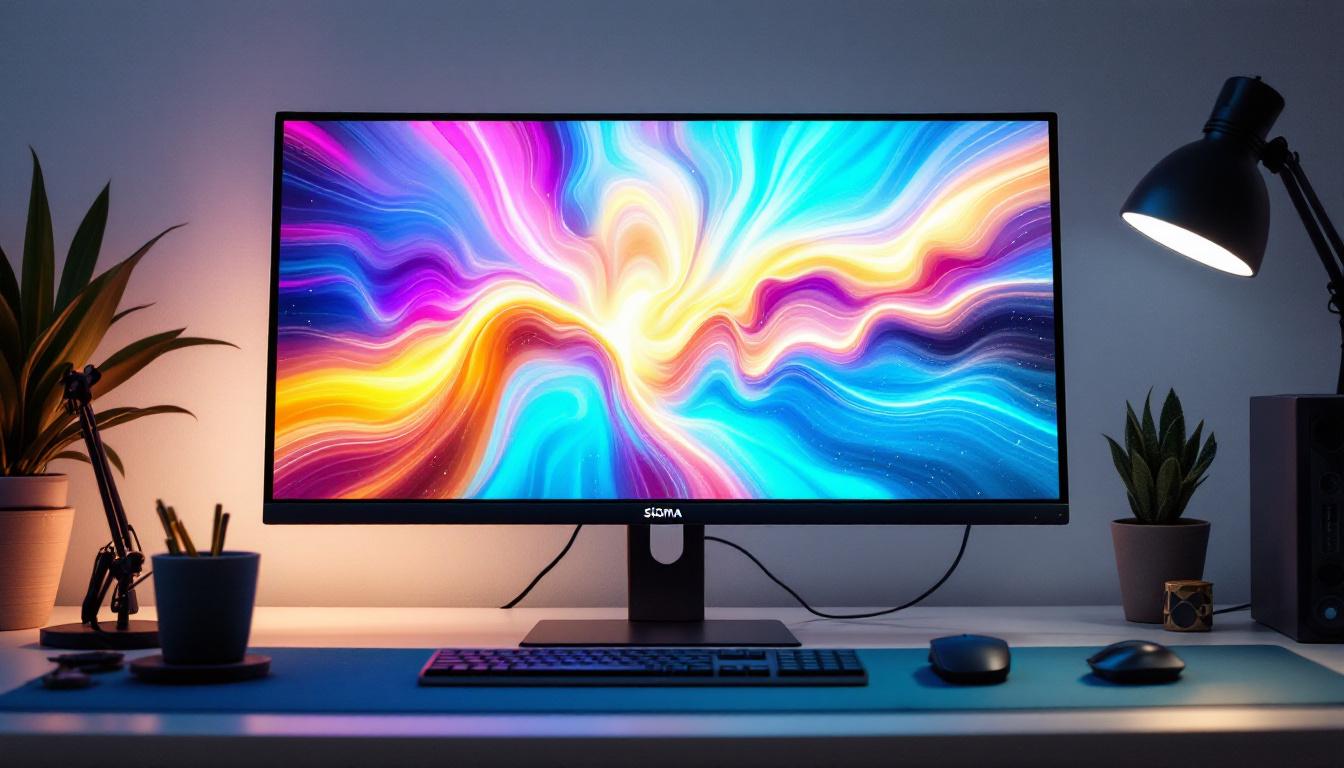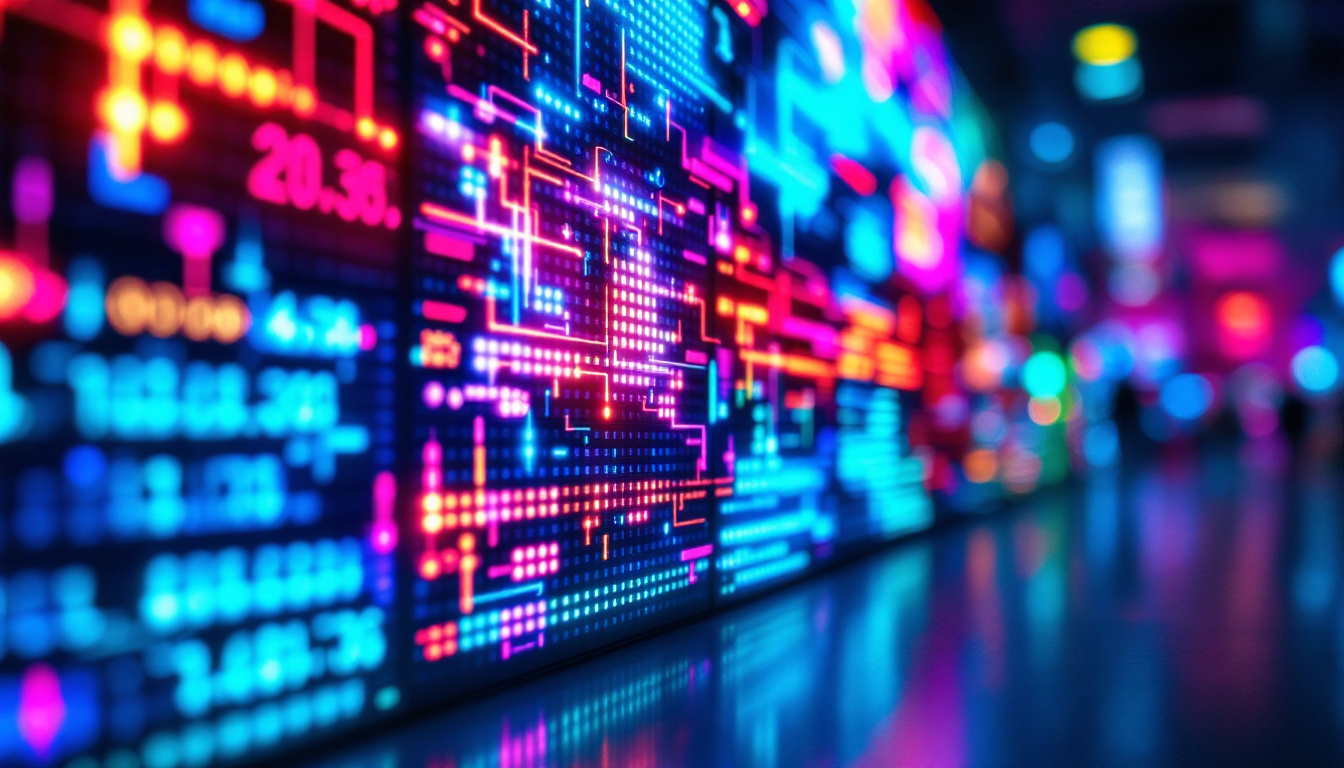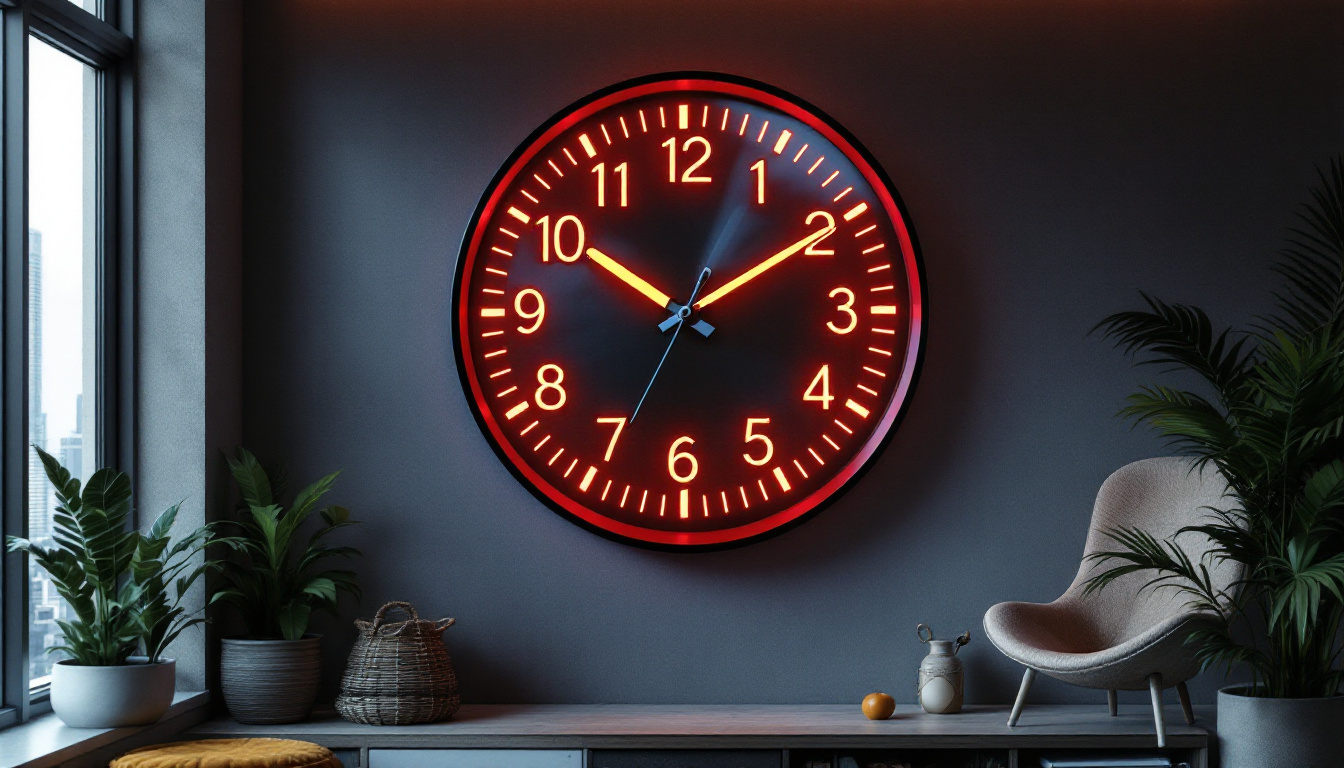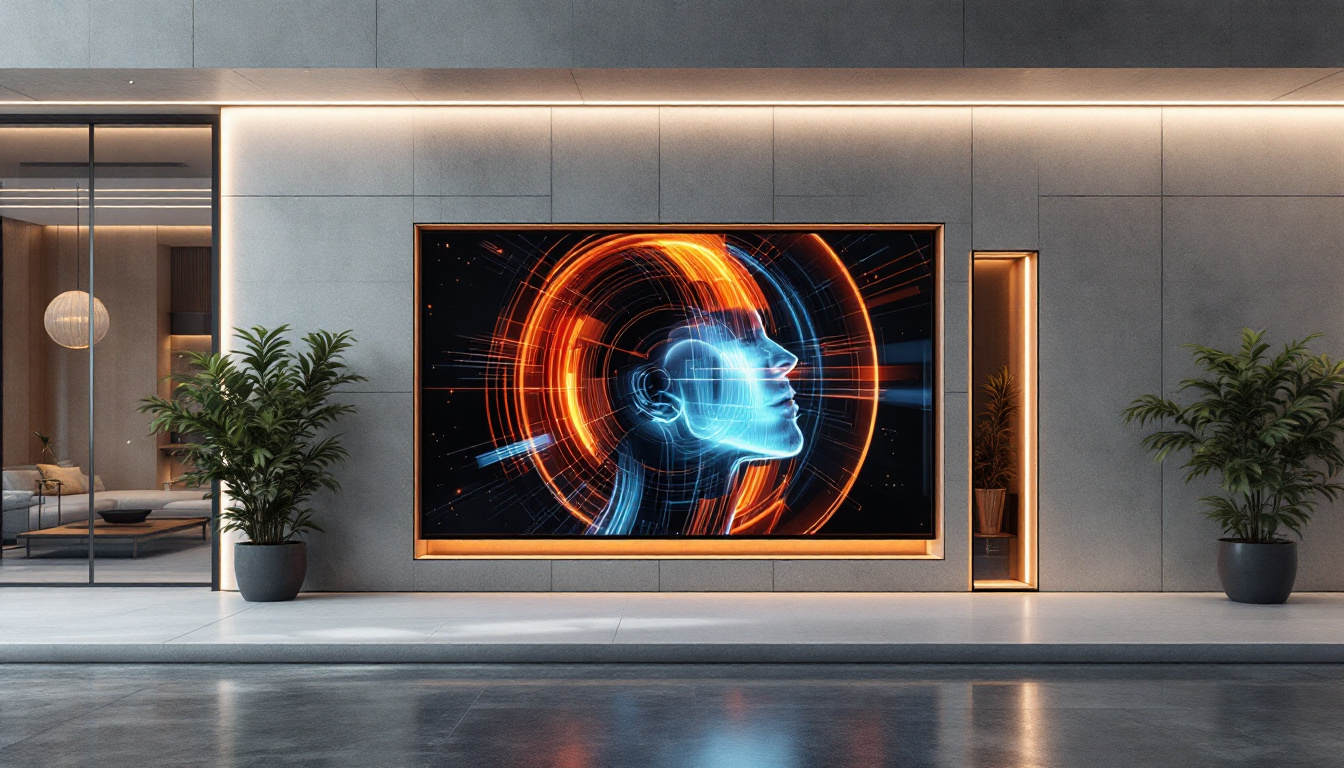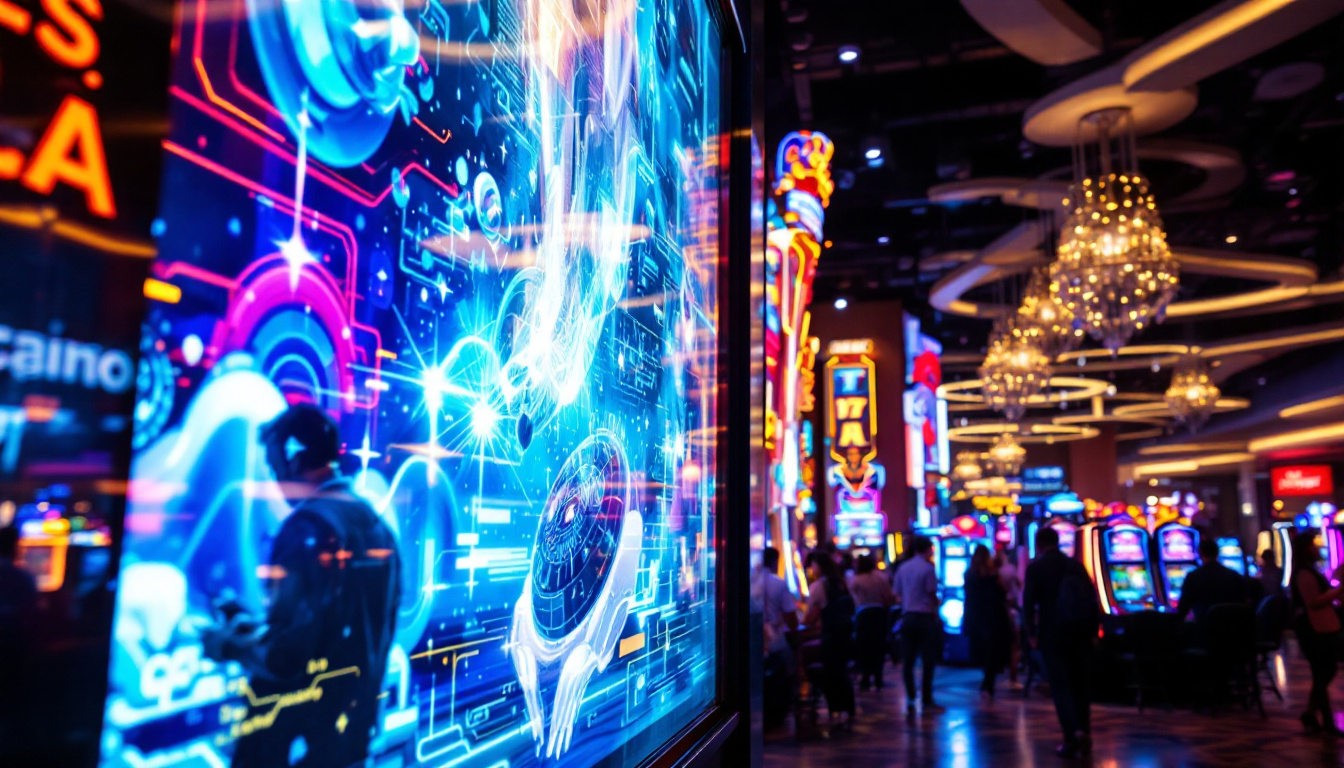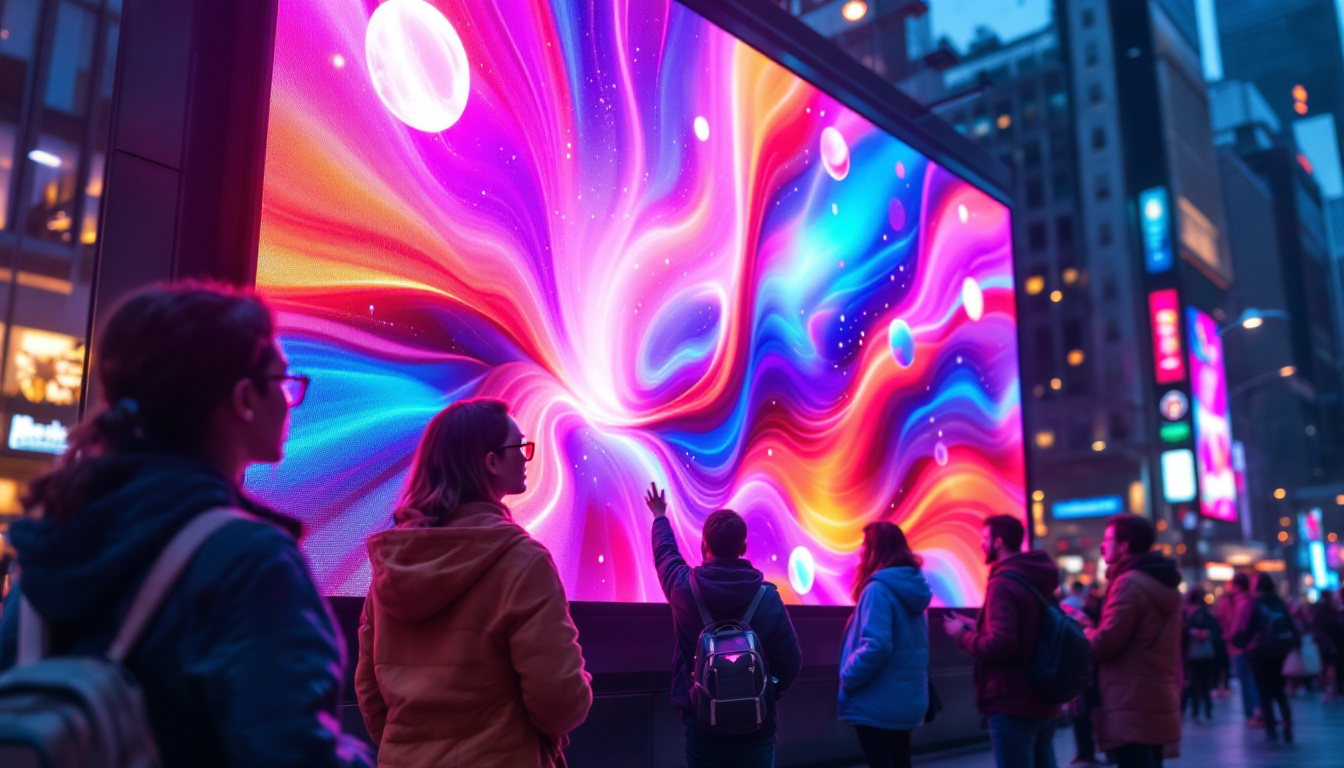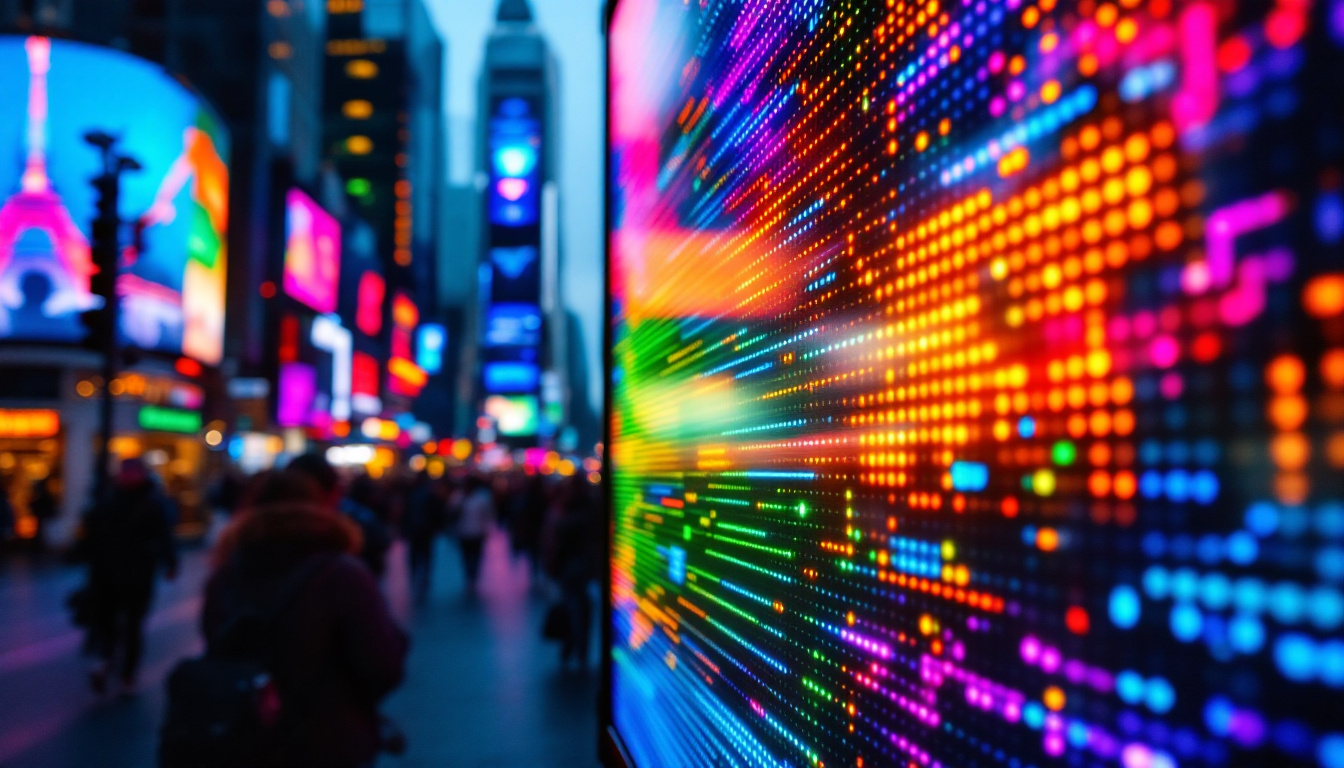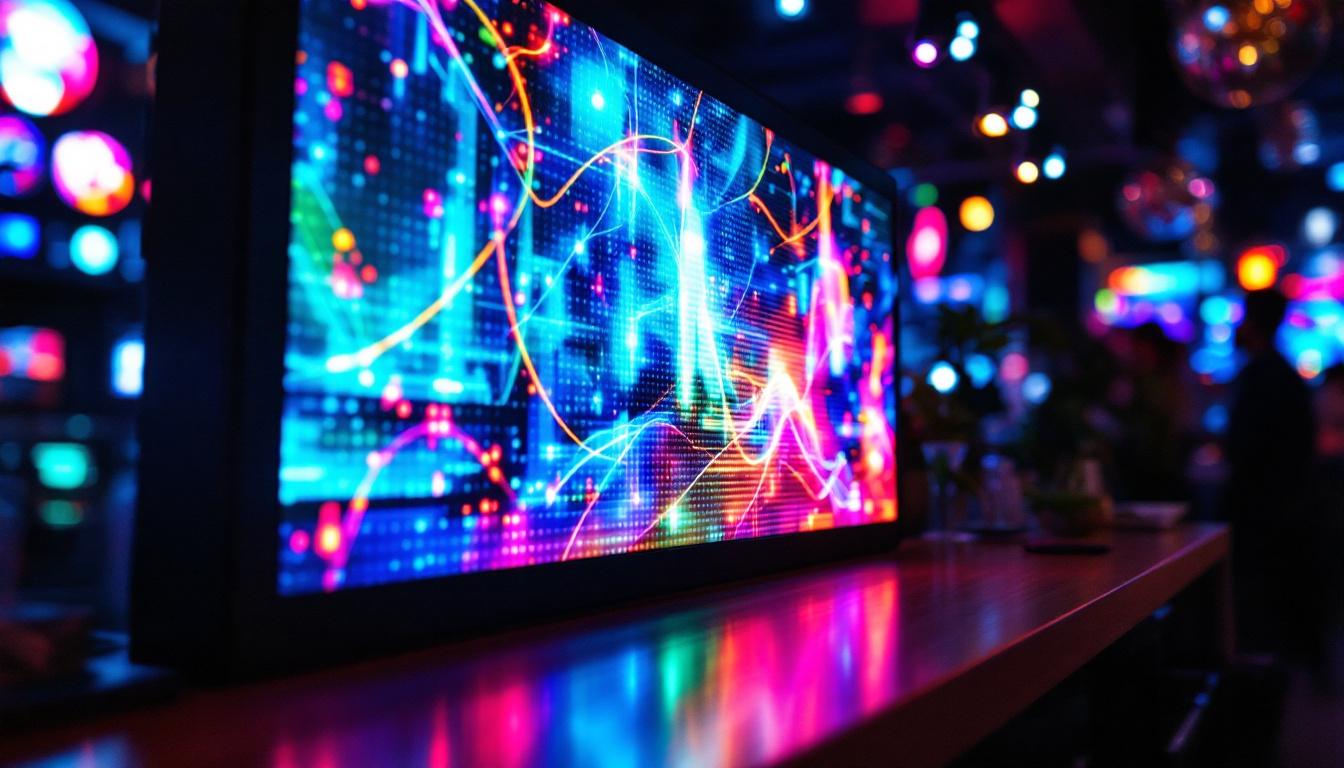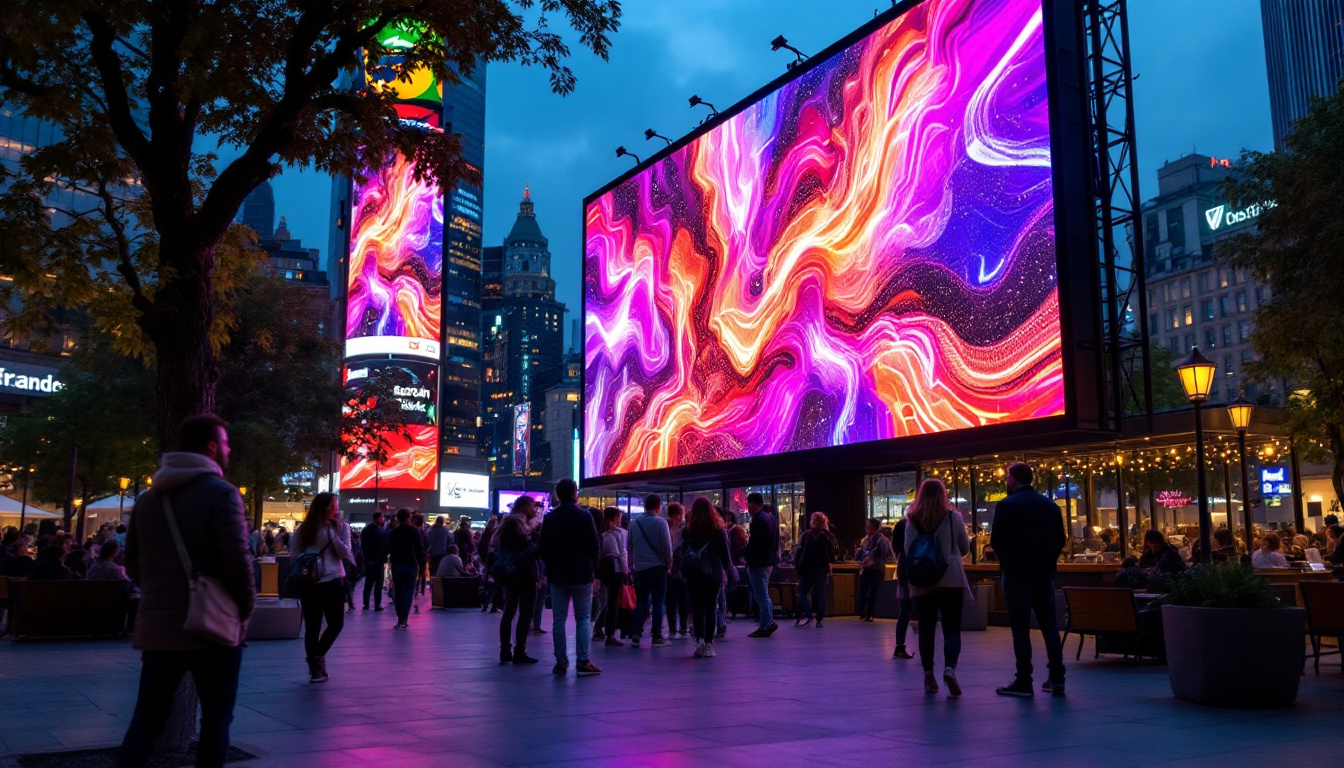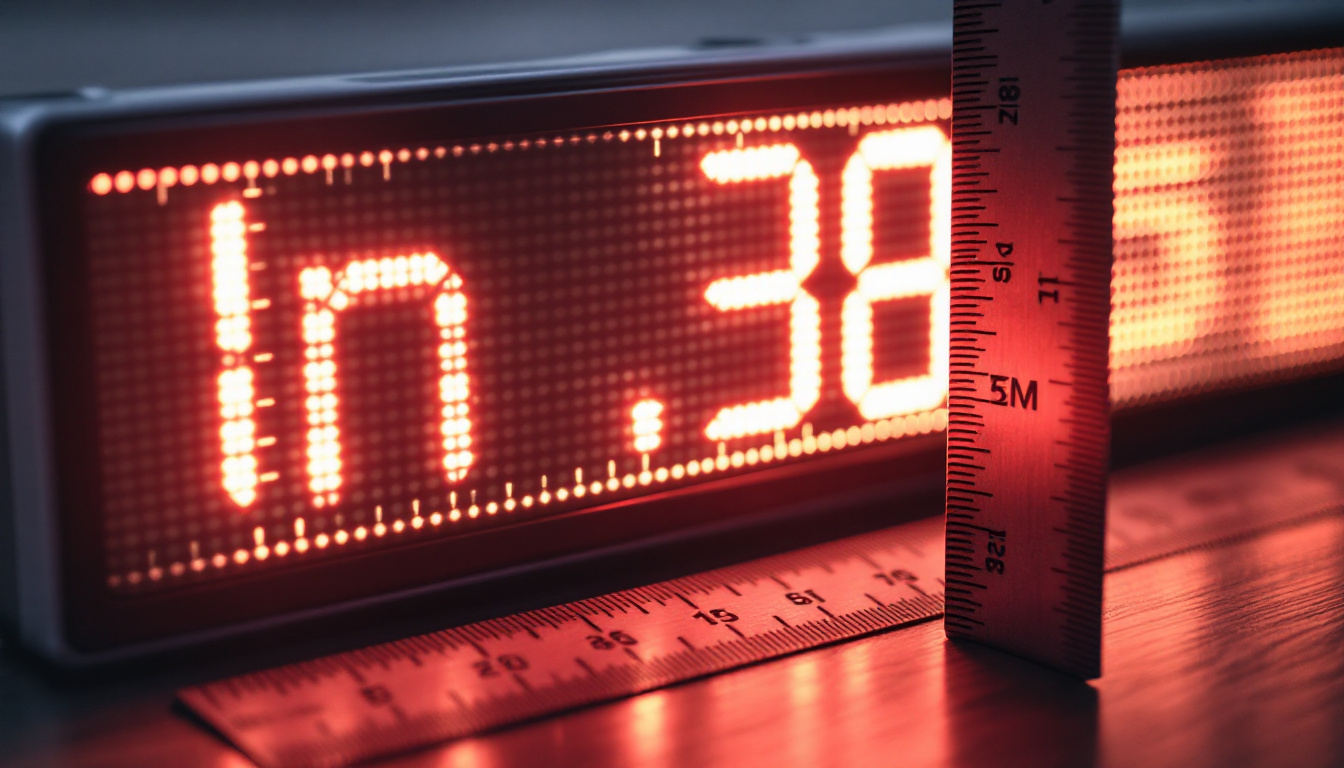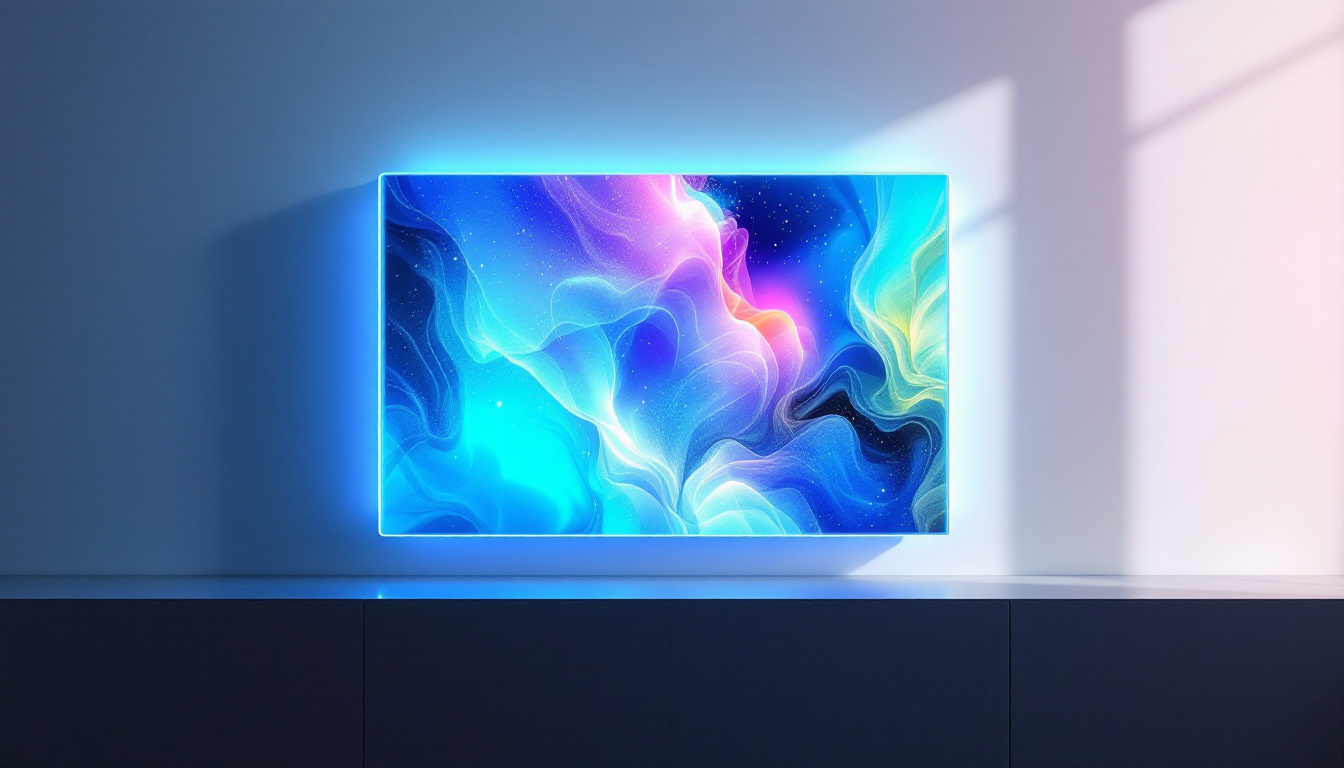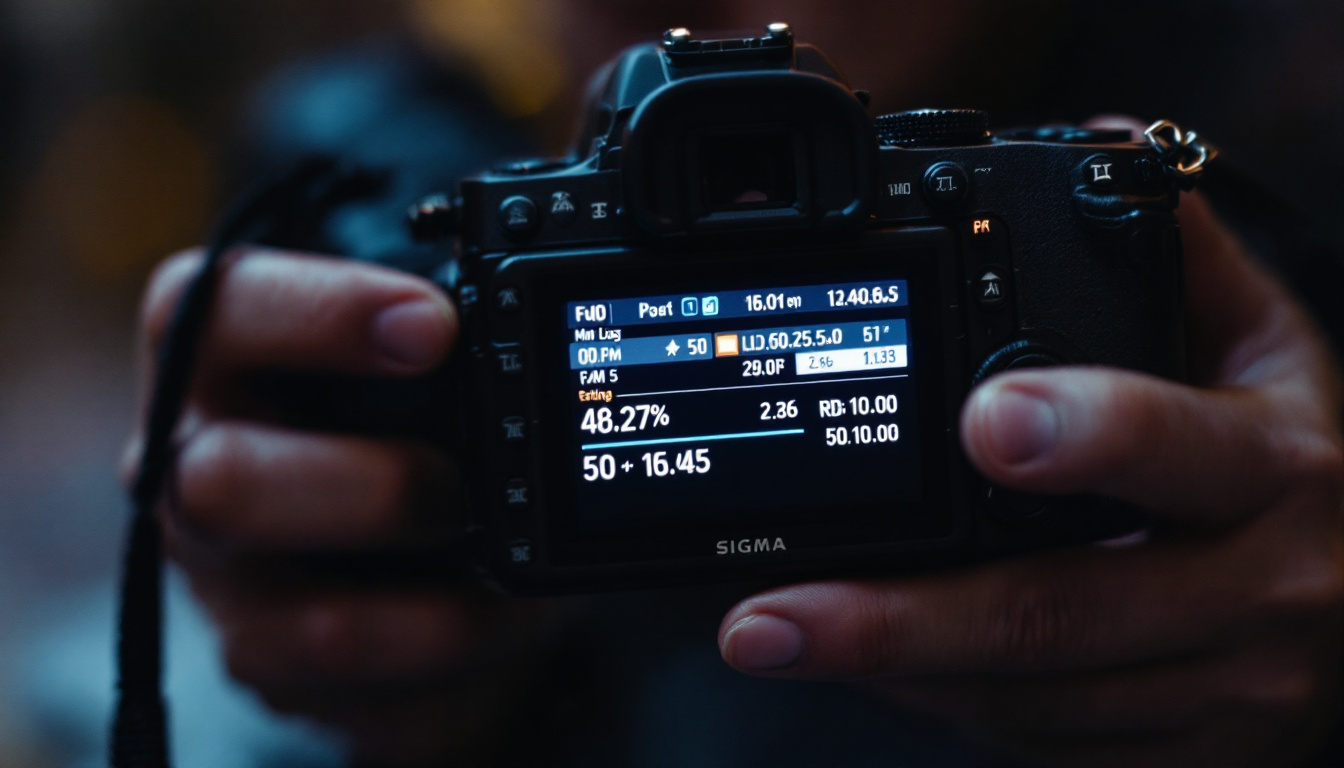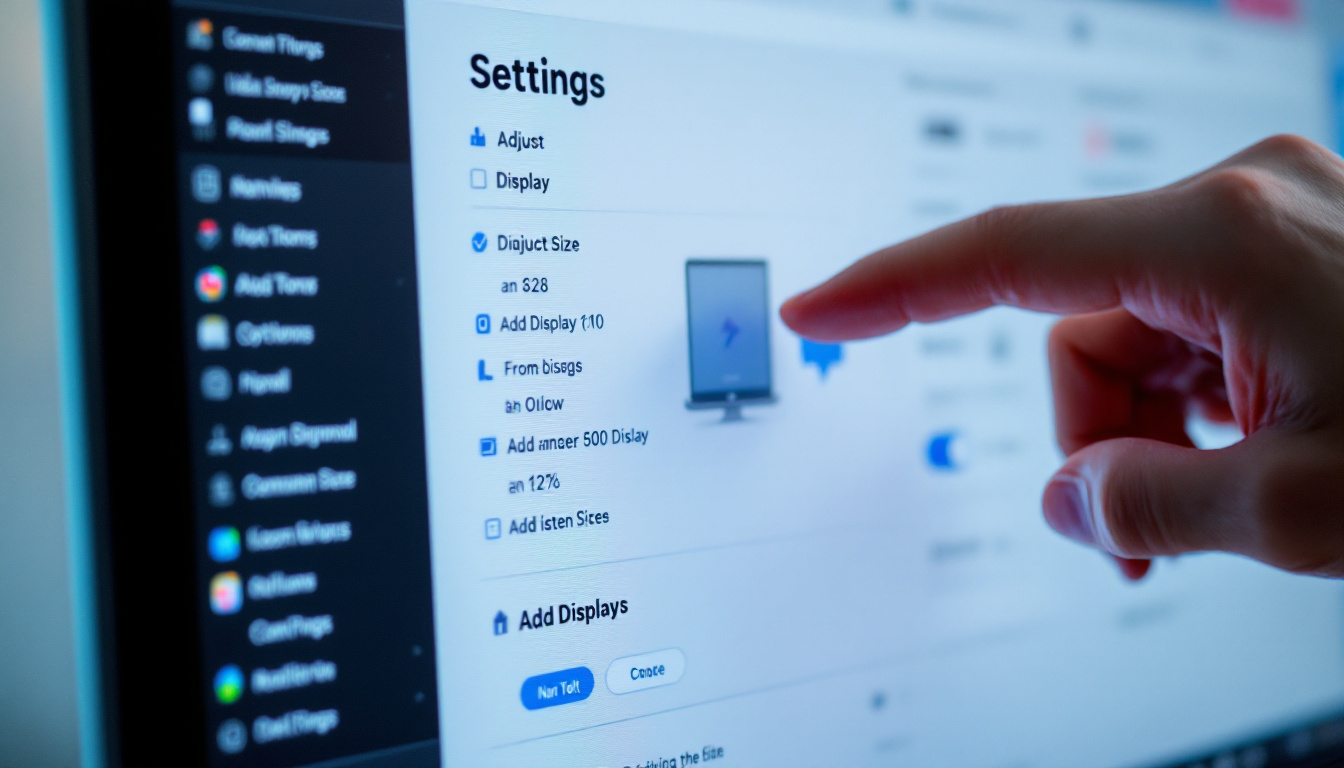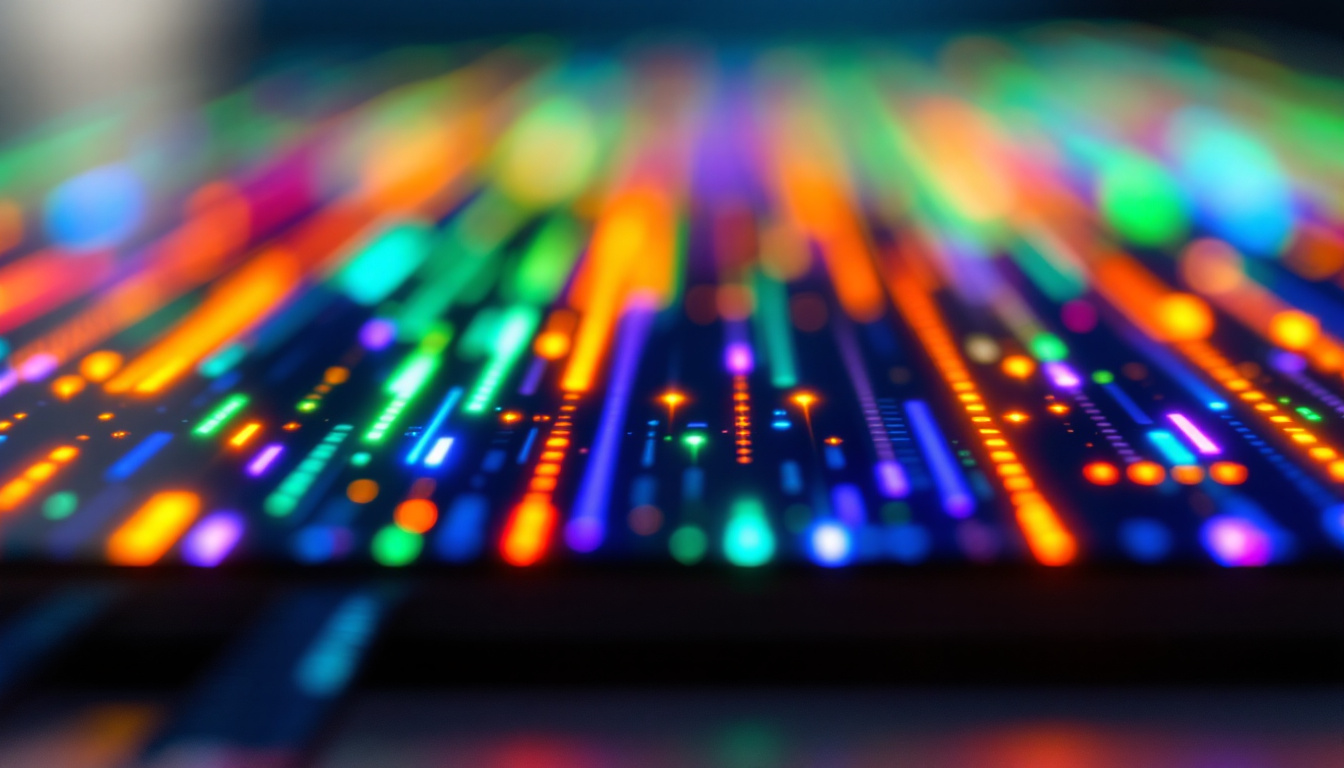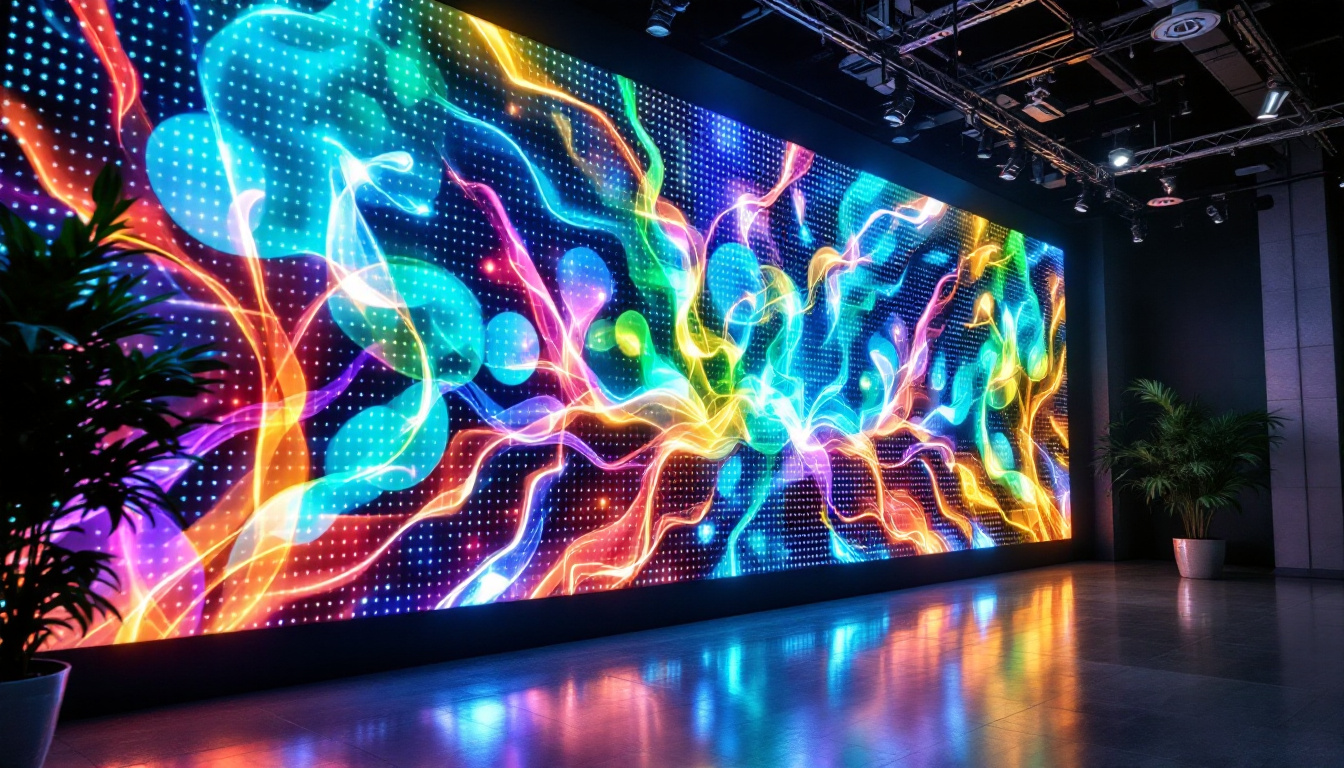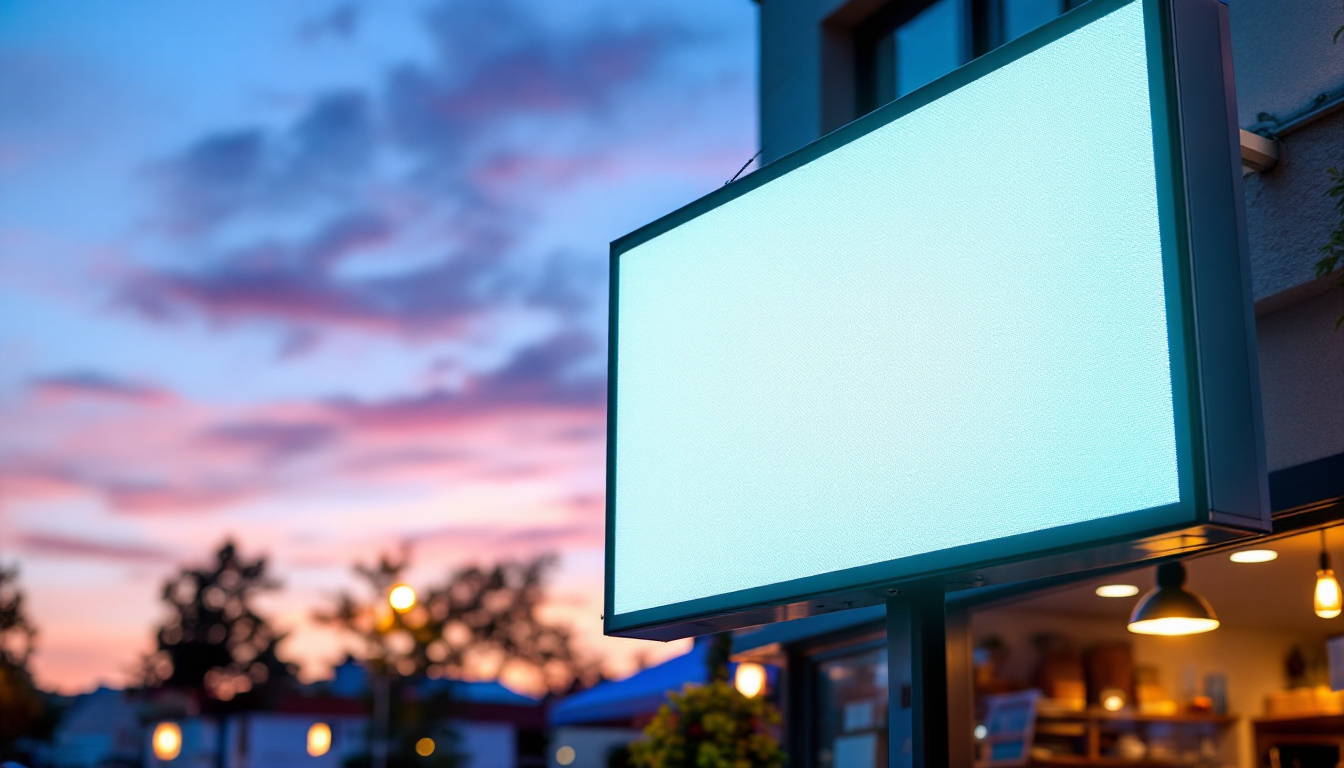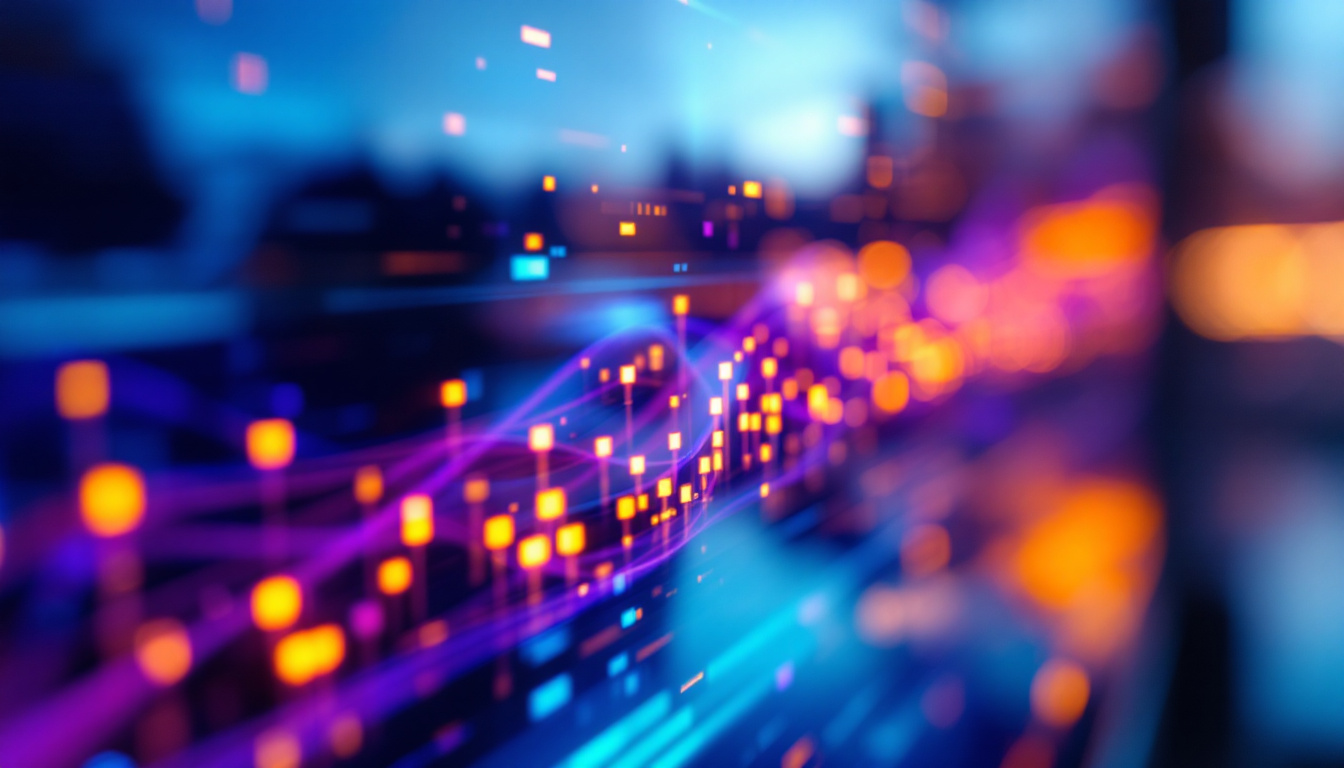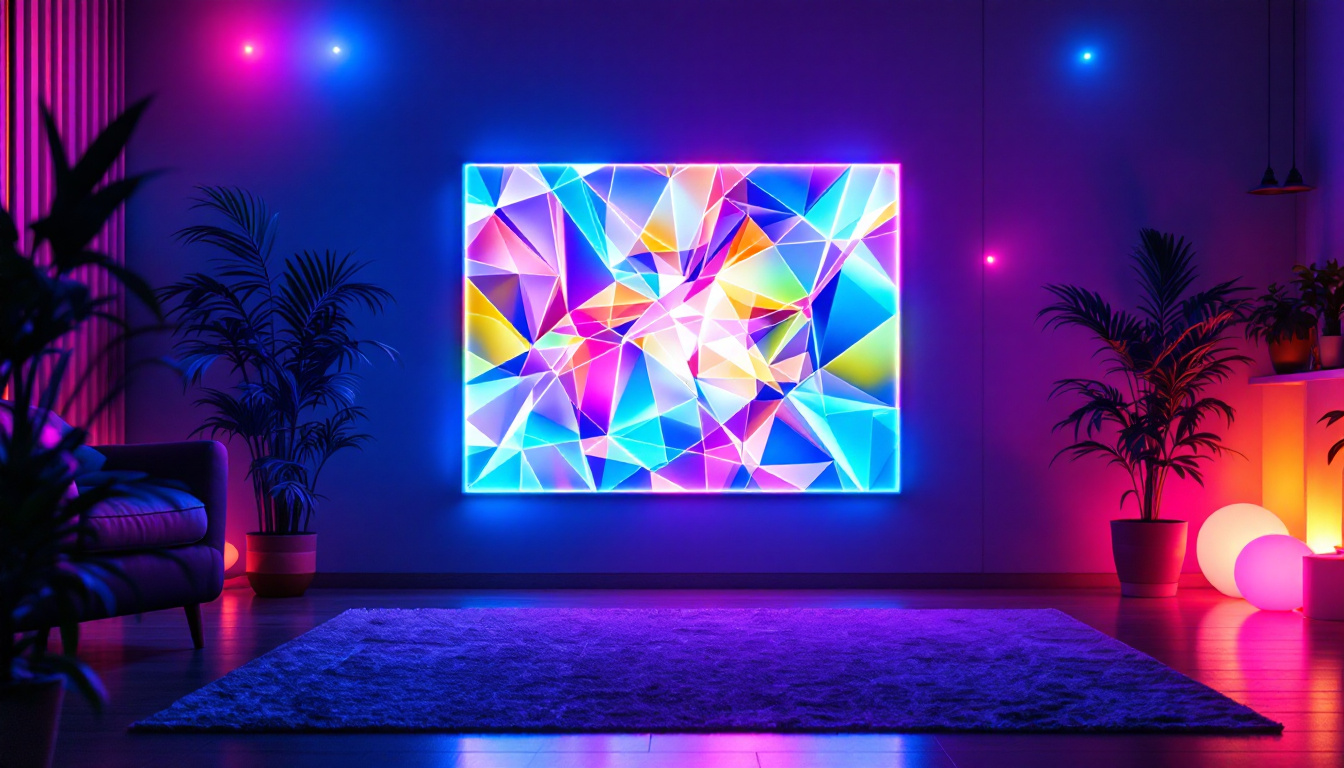In recent years, LED displays have emerged as a revolutionary technology in various fields, from advertising to entertainment and even in corporate environments. Among the various applications of LED technology, background walls have gained significant traction. These large, vibrant displays not only enhance aesthetics but also serve functional purposes in various settings. This article explores the intricacies of LED background walls, their components, applications, and the future of this innovative technology.
Understanding LED Technology
What is LED?
LED, or Light Emitting Diode, is a semiconductor device that emits light when an electric current passes through it. Unlike traditional incandescent bulbs, LEDs are energy-efficient, long-lasting, and capable of producing a wide range of colors. This versatility makes them ideal for various applications, including background walls.
The technology behind LEDs allows for the creation of vivid displays that can be manipulated to show dynamic content. This is particularly useful in environments where capturing attention is crucial, such as in retail spaces, concert venues, and corporate events. Additionally, LEDs generate less heat compared to traditional lighting options, which not only contributes to their energy efficiency but also reduces the risk of overheating in enclosed spaces. This characteristic makes LEDs a safer choice for both residential and commercial lighting solutions.
Types of LED Displays
LED displays come in various forms, each tailored for specific applications. The most common types include:
- Direct View LED: These displays consist of individual LED modules that are directly visible to the viewer. They are often used for large outdoor billboards and indoor screens.
- LED Video Walls: Composed of multiple LED panels, video walls can create a seamless display of images and videos. They are popular in event spaces and control rooms.
- Transparent LED: This innovative type allows for visibility through the display, making it suitable for storefronts and exhibitions where maintaining a view is essential.
Beyond these common types, there are also specialized LED displays designed for niche markets. For instance, flexible LED displays can be bent and shaped to fit unique architectural designs, making them perfect for creative installations in museums or art galleries. Furthermore, high-brightness LEDs are engineered for outdoor use, ensuring that the displays remain visible even in direct sunlight. This adaptability not only enhances aesthetic appeal but also allows businesses to communicate their messages effectively in various environments.
Moreover, advancements in LED technology have led to the development of smart LED displays that can integrate with IoT devices. These displays can be programmed to change content based on real-time data, such as weather conditions or audience engagement levels. This capability opens up new possibilities for interactive advertising and personalized customer experiences, making LED technology a driving force in modern digital communication strategies.
Components of an LED Background Wall
LED Modules
The building blocks of any LED display are the LED modules. Each module contains a matrix of LEDs that can be programmed to emit different colors. The arrangement and density of these LEDs determine the resolution and image quality of the display. Higher pixel density results in sharper images, making it crucial for applications where detail is important. For instance, a display intended for close viewing, such as in retail environments or control rooms, typically utilizes a higher pixel pitch to ensure clarity and vibrancy. Moreover, advancements in LED technology have led to the development of flexible modules, which can be shaped to fit unconventional spaces, allowing for creative installations that were previously unimaginable.
Control Systems
An LED background wall is only as good as its control system. This system manages the content displayed on the wall, allowing for real-time updates and dynamic presentations. Control systems can range from simple software solutions to complex setups that integrate with various content management systems. The choice of control system often depends on the specific requirements of the installation. For example, some systems offer advanced features such as remote access, allowing operators to make adjustments from anywhere in the world. Additionally, many modern control systems support interactive content, enabling audience engagement through touch or motion sensors, which can transform a passive viewing experience into an immersive event.
Power Supply and Cooling
LED displays require a reliable power supply to function effectively. Additionally, they generate heat, which can affect performance and longevity. Therefore, proper cooling systems are essential to ensure that the display operates within safe temperature limits. This is particularly important for large installations that may be in use for extended periods. Many setups incorporate redundant power supplies to prevent downtime in case of a failure, ensuring that the display remains operational even under heavy use. Furthermore, innovative cooling solutions, such as liquid cooling systems, are being explored to enhance efficiency and reduce noise, making them ideal for environments where silence is paramount, such as theaters or conference rooms.
Applications of LED Background Walls
Advertising and Marketing
One of the most prominent uses of LED background walls is in advertising. Retailers and brands leverage these displays to showcase their products and promotions in eye-catching ways. The ability to change content quickly allows businesses to adapt their messaging based on trends, seasons, or events.
Moreover, LED displays can create immersive experiences through interactive content, drawing customers in and enhancing brand engagement. This dynamic nature of LED advertising is particularly effective in high-traffic areas where capturing attention is crucial.
Entertainment and Events
In the entertainment industry, LED background walls have transformed the way performances and events are presented. Concerts, theater productions, and corporate events utilize these displays to create stunning visual backdrops that complement the performance. The ability to synchronize visuals with audio enhances the overall experience for the audience.
Furthermore, LED walls can be used for live broadcasting, allowing for high-quality visuals that can be seen both in-person and through various media channels. This versatility makes them a staple in modern event production.
Corporate Environments
In corporate settings, LED background walls serve multiple purposes. They can be used for presentations, video conferencing, and as dynamic information displays in lobbies or conference rooms. The ability to present data visually helps in conveying complex information effectively, making meetings more engaging.
Additionally, these displays can be utilized for branding purposes, reinforcing company identity in public spaces. The modern aesthetic of LED walls aligns well with contemporary office designs, making them an attractive addition to any corporate environment.
Benefits of LED Background Walls
High Visibility and Brightness
One of the standout features of LED background walls is their brightness. Unlike traditional displays, LEDs can produce vibrant colors and high contrast levels, making them visible even in well-lit environments. This is particularly advantageous for outdoor applications where sunlight can wash out other types of displays.
Energy Efficiency
LED technology is known for its energy efficiency. Compared to traditional lighting solutions, LED displays consume significantly less power, which can lead to substantial cost savings over time. This makes them an environmentally friendly choice for businesses looking to reduce their carbon footprint.
Longevity and Durability
LED displays are built to last. With a lifespan that can exceed 100,000 hours, they require less frequent replacements than traditional displays. Additionally, they are resistant to shock and vibration, making them suitable for various environments, including those that experience high foot traffic or outdoor conditions.
Challenges and Considerations
Initial Investment
While the benefits of LED background walls are numerous, the initial investment can be a significant barrier for some businesses. The cost of high-quality LED displays, installation, and necessary infrastructure can be substantial. However, it is essential to consider the long-term savings and potential return on investment when evaluating the overall cost.
Content Management
Managing content for LED displays can be complex, especially for businesses that require frequent updates. A robust content management system is essential to ensure that the right messages are displayed at the right times. This may require additional training for staff or hiring specialized personnel, adding to the overall operational costs.
Technical Issues
Like any technology, LED displays are not immune to technical issues. From software glitches to hardware malfunctions, businesses must be prepared to address potential problems promptly. Regular maintenance and monitoring can help mitigate these risks, ensuring that the display operates smoothly.
The Future of LED Background Walls
Advancements in Technology
The future of LED background walls looks promising, with ongoing advancements in technology. Innovations such as microLED and OLED are paving the way for even higher resolution displays with improved color accuracy and flexibility. These technologies could lead to thinner, lighter displays that can be integrated into various environments seamlessly.
Increased Interactivity
As technology evolves, the demand for interactive displays continues to grow. Future LED background walls are likely to incorporate touch and gesture recognition, allowing users to engage with content in new and exciting ways. This interactivity can enhance user experience, making displays more engaging and informative.
Integration with Smart Technology
The integration of LED background walls with smart technology is another trend on the horizon. As the Internet of Things (IoT) continues to expand, LED displays may become part of larger smart systems that can respond to environmental changes or user behavior. This could lead to more personalized and context-aware displays that adapt to their surroundings.
Conclusion
LED background walls have transformed the way information is presented and consumed across various industries. Their vibrant colors, energy efficiency, and versatility make them an attractive option for businesses looking to enhance their visual communication. While challenges such as initial costs and content management exist, the benefits often outweigh these concerns.
As technology continues to advance, the future of LED displays promises even more exciting possibilities. From increased interactivity to smarter integration, LED background walls are set to play a crucial role in shaping the visual landscape of the future. Embracing this technology can provide businesses with a competitive edge, allowing them to captivate audiences and convey messages more effectively than ever before.
Illuminate Your Space with LumenMatrix
Ready to elevate your visual communication and create an unforgettable impact? LumenMatrix is at the forefront of LED display innovation, offering a comprehensive range of solutions tailored to your needs. From Indoor and Outdoor LED Wall Displays to specialized options like Vehicle, Sports, and Floor LED Displays, our technology is designed to captivate and engage your audience. Discover the transformative power of our Custom, All-in-One, and Transparent LED Displays. Check out LumenMatrix LED Display Solutions today and bring your brand’s message to life with clarity and vibrancy.

